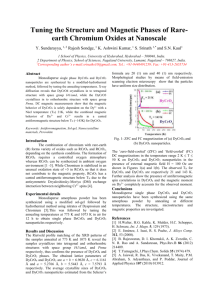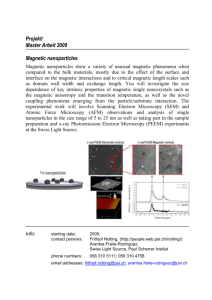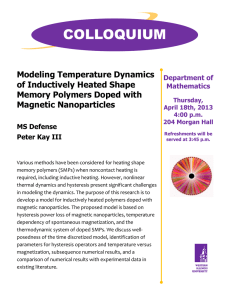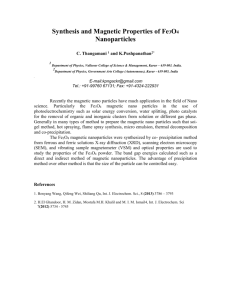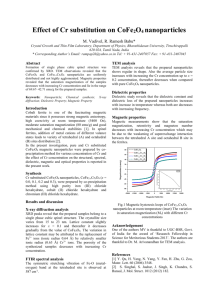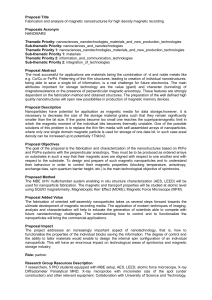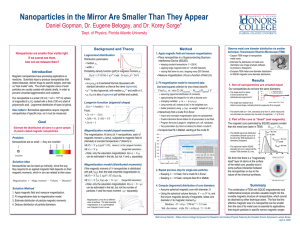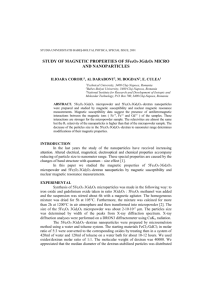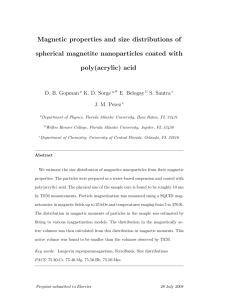Monodisperse Magnetic Nanoparticles
advertisement
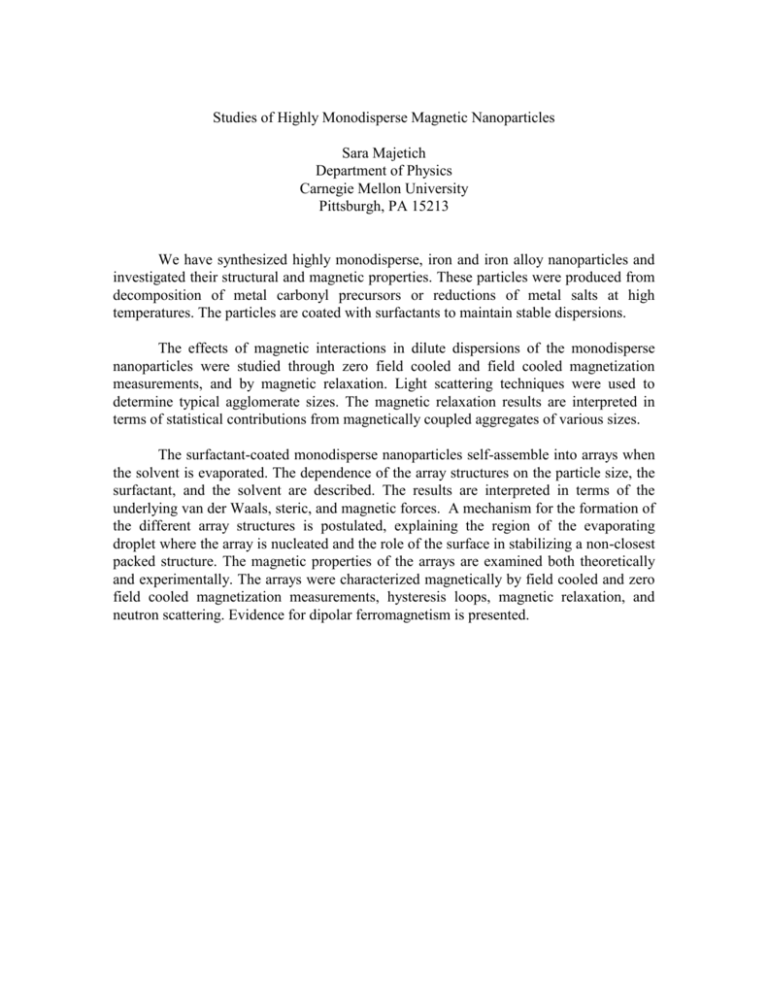
Studies of Highly Monodisperse Magnetic Nanoparticles Sara Majetich Department of Physics Carnegie Mellon University Pittsburgh, PA 15213 We have synthesized highly monodisperse, iron and iron alloy nanoparticles and investigated their structural and magnetic properties. These particles were produced from decomposition of metal carbonyl precursors or reductions of metal salts at high temperatures. The particles are coated with surfactants to maintain stable dispersions. The effects of magnetic interactions in dilute dispersions of the monodisperse nanoparticles were studied through zero field cooled and field cooled magnetization measurements, and by magnetic relaxation. Light scattering techniques were used to determine typical agglomerate sizes. The magnetic relaxation results are interpreted in terms of statistical contributions from magnetically coupled aggregates of various sizes. The surfactant-coated monodisperse nanoparticles self-assemble into arrays when the solvent is evaporated. The dependence of the array structures on the particle size, the surfactant, and the solvent are described. The results are interpreted in terms of the underlying van der Waals, steric, and magnetic forces. A mechanism for the formation of the different array structures is postulated, explaining the region of the evaporating droplet where the array is nucleated and the role of the surface in stabilizing a non-closest packed structure. The magnetic properties of the arrays are examined both theoretically and experimentally. The arrays were characterized magnetically by field cooled and zero field cooled magnetization measurements, hysteresis loops, magnetic relaxation, and neutron scattering. Evidence for dipolar ferromagnetism is presented. Biographical Info.: Undergrad, Chemistry – Princeton Masters, Chemistry – Columbia PhD, Physics – University of Georgia Postdoc – Cornell Faculty, Physics – Carnegie Mellon, since 1990, now full professor
